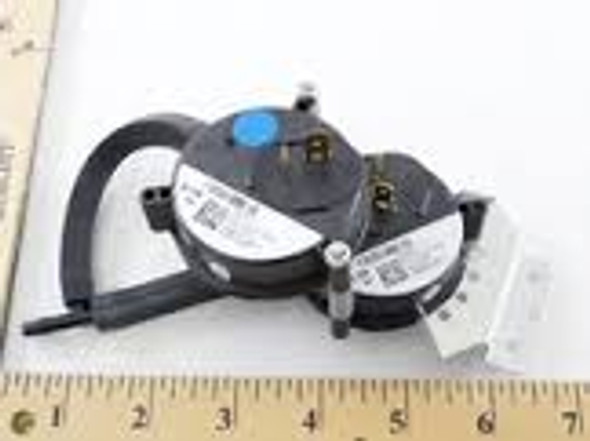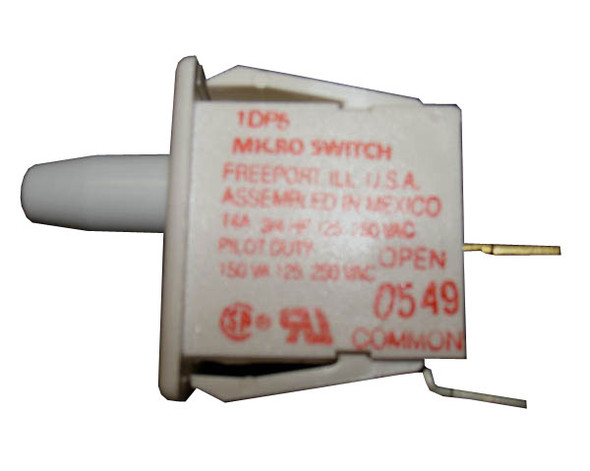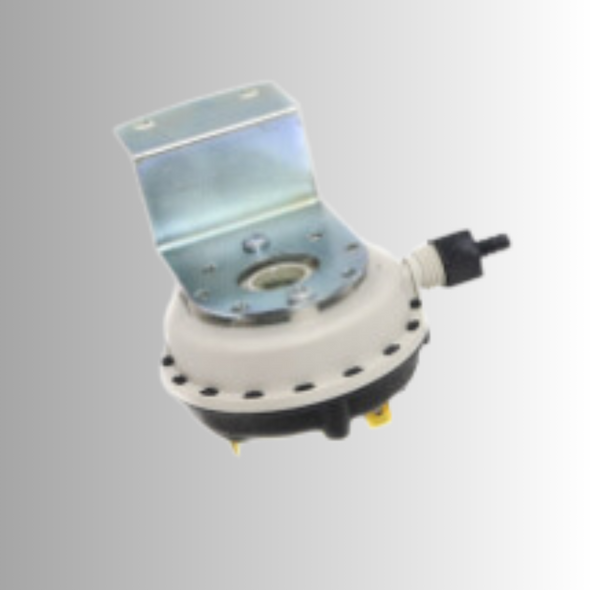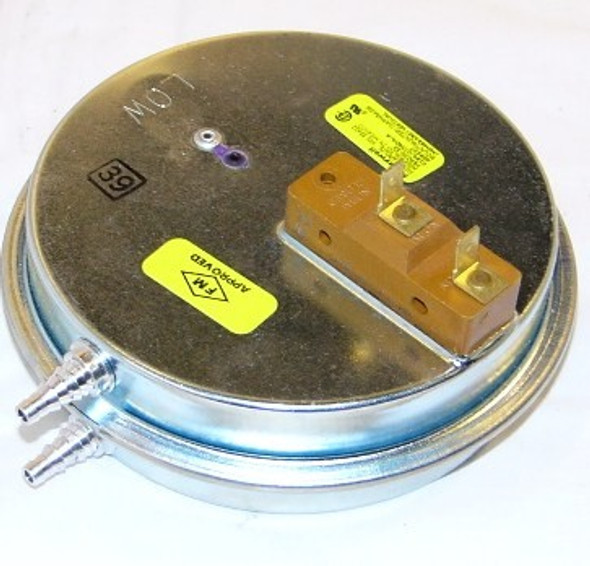Switches & Relays
- Product
- Qty in Cart
- Quantity
- Price
- Subtotal
-

Siemens Industrial Controls 3RU2126-4BB0 Overload Relay 14-20amp
Siemens Industrial Controls
MSRP: $102.27Now: $77.47Siemens Industrial Controls 3RU2126-4BB0 OVERLOAD RELAY 14-20amp FurnacePartSource.com Commitment Always Brand-New Genuine Parts In stock parts ship Same Business Day when ordered by 5PM ET No Minimum Order Requirements unless noted...MSRP: $102.27Now: $77.47 -

Amana-Goodman 0130F00506 -.075"PF SPST PRESSURE SWITCH
Amana-Goodman
MSRP: $27.39Now: $20.75Amana-Goodman 0130F00506 -.075"PF SPST PRESSURE SWITCH FurnacePartSource.com Commitment Always Brand-New Genuine Parts In stock parts ship Same Business Day when ordered by 5PM ET No Minimum Order Requirements unless noted aboveMSRP: $27.39Now: $20.75 -


Lennox 14A46 Pressure Switch 2-STG-.81/-.45
G.E. APPLIANCES
MSRP: $74.66Now: $56.56Lennox 14A46 Pressure Switch 2-STG-.81/-.45 FurnacePartSource.com Commitment Always Brand-New Genuine Parts In stock parts ship Same Business Day when ordered by 5PM ET No Minimum Order Requirements unless noted aboveMSRP: $74.66Now: $56.56 -


Veris Industries H-938 Adj. Current Switch w/ Relay 2.5-135A
Veris Industries
MSRP: $97.22Now: $73.65Veris Industries H-938 Adj. Current Switch w/ Relay 2.5-135A FurnacePartSource.com Commitment Always Brand-New Genuine Parts In stock parts ship Same Business Day when ordered by 5PM ET No Minimum Order Requirements unless noted...MSRP: $97.22Now: $73.65 -


Rheem-Ruud 42-100491-09 Start Relay
Rheem-Ruud
MSRP: $23.64Now: $17.91Rheem-Ruud 42-100491-09 Start Relay FurnacePartSource.com Commitment Always Brand-New Genuine Parts In stock parts ship Same Business Day when ordered by 5PM ET No Minimum Order Requirements unless noted aboveMSRP: $23.64Now: $17.91 -

Emerson Climate-White Rodgers 90-295Q FAN RELAY 240V (ENCLOSED)
Copeland Comfort Control (White Rodgers)
MSRP: $21.80Now: $16.51Emerson Climate-White Rodgers 90-295Q FAN RELAY 240V ENCLOSED FurnacePartSource.com Commitment Always Brand-New Genuine Parts In stock parts ship Same Business Day when ordered by 5PM ET No Minimum Order...MSRP: $21.80Now: $16.51 -


Amana-Goodman 10727923 Pressure Switch barb connection -.70"wc SPST 1/4"
Amana-Goodman
MSRP: $84.35Now: $63.90Amana-Goodman 10727923 Pressure Switch barb connection -.70"wc SPST 1/4" FurnacePartSource.com Commitment Always Brand-New Genuine Parts In stock parts ship Same Business Day when ordered by 5PM ET No Minimum Order Requirements...MSRP: $84.35Now: $63.90 -

Carrier HK06NB019 Pressure Switch
Carrier
MSRP: $191.17Now: $144.82Carrier HK06NB019 Pressure Switch FurnacePartSource.com Commitment Item Typically Ships Within the Same Business Day Brand-New Genuine Parts - Everytime No Minimum Order RequirementsMSRP: $191.17Now: $144.82 -

York S1-024-35271-000 (replacement for 024-35271-000) -.5"WC SPNO Close On Fall # Sw
York
MSRP: $58.20Now: $44.09York S1-024-35271-000 -.5"WC SPNO Close On Fall # Sw This is identical to 024-35271-000 FurnacePartSource.com Commitment Item Typically Ships Within the Same Business Day Brand-New Genuine Parts - Everytime No Minimum Order RequirementsMSRP: $58.20Now: $44.09 -

100110001 AO SMITH .70"WC PRESSURE SWITCH
Lochinvar & A.O. Smith
MSRP: $90.21Now: $68.34Type a description for this product here...MSRP: $90.21Now: $68.34 -

Xylem-Bell & Gossett 109426 (OBSOLETE) Z-3 ZONE RELAY
Xylem-Bell & Gossett
OBSOLETE with No Replacement: Xylem-Bell & Gossett 109426 Z-3 ZONE RELAY We're sorry--this item is no longer available. This part has been classified as obsolete with no replacement FurnacePartSource.com...Qty in Cart: 0Price:Subtotal: -

Danfoss # 060-5243 100/600# KPU6W SPDT Auto 1/4"F
Danfoss
MSRP: $117.15Now: $88.75Danfoss # 060-5243 100/600# KPU6W SPDT Auto 1/4"F FurnacePartSource.com Commitment Item Typically Ships Within the Same Business Day Brand-New Genuine Parts - Everytime No Minimum Order RequirementsMSRP: $117.15Now: $88.75 -

Nordyne # 632477R 0.70"WC SPST Pressure Switch
Nordyne
MSRP: $96.20Now: $72.88Nordyne # 632477R -0.70"WC SPST PRESSURE SWITCH FurnacePartSource.com Commitment Item Typically Ships Within the Same Business Day Brand-New Genuine Parts - Everytime No Minimum Order RequirementsMSRP: $96.20Now: $72.88 -
 MSRP: $37.26Now: $28.22
MSRP: $37.26Now: $28.22 -

Trane Pressure Switch; part #SWT1277
Trane
MSRP: $89.07Now: $67.47Trane® Pressure Switch; part #SWT1277; Limit Switch Open145F Close115f; Backed by a One Year Warranty. FurnacePartSource.com Commitment Item Typically Ships Within the Same Business Day Brand-New Genuine Parts - EverytimeNo Minimum Order...MSRP: $89.07Now: $67.47 -

Lennox Pressure Switch Part #24W98
Lennox
MSRP: $55.79Now: $42.26Lennox® Pressure Switch FurnacePartSource.com Commitment Item Typically Ships within the Same Business Day Brand-New Genuine Parts - EverytimeNo Minimum Order RequirementsMSRP: $55.79Now: $42.26 -

York Controls Pressure Switch Part# S1-024-35272-000
York
MSRP: $58.00Now: $43.94York Controls® York Pressure Switch 0.54” on fall SPNOMSRP: $58.00Now: $43.94 -
 MSRP: $74.38Now: $56.35
MSRP: $74.38Now: $56.35 -


Texas Furnace (Consolidated Ind) 4026900 Pressure Switch .52"wc SPDT
Texas Furnace(Consolidated Ind)
MSRP: $162.41Now: $123.04Texas Furnace (Consolidated Ind) 4026900 Pressure Switch .52"wc SPDT FurnacePartSource.com Commitment Always Brand-New Genuine Parts In stock parts ship Same Business Day when ordered by 5PM ET No Minimum Order...MSRP: $162.41Now: $123.04 -

Heil QuakerVent Pressure Switch Part #609537
International Comfort Products
MSRP: $167.87Now: $127.18Heil Quaker® VENT PRESSURE SWITCH Heil / Sears Kenmore unitsMSRP: $167.87Now: $127.18

